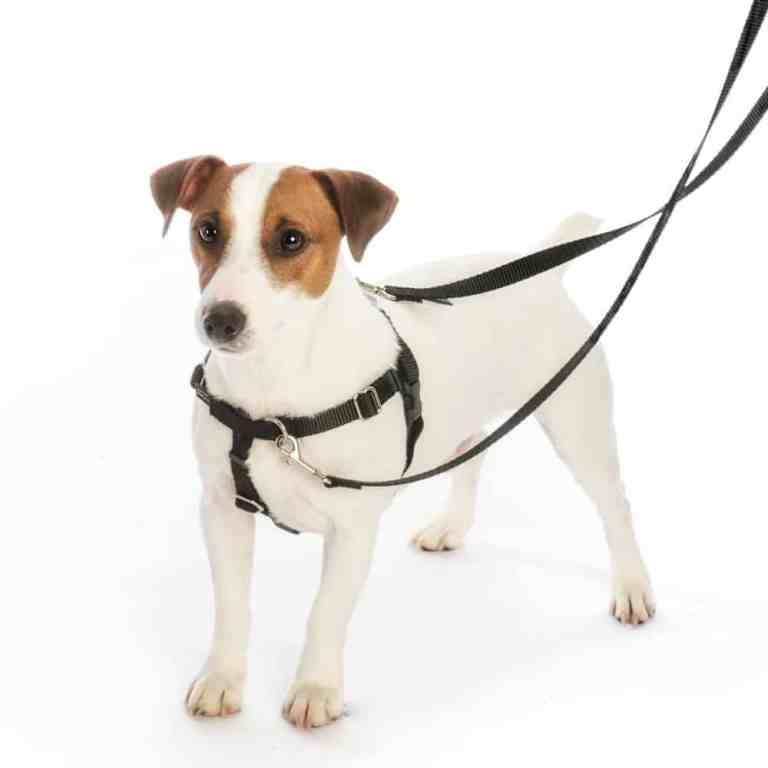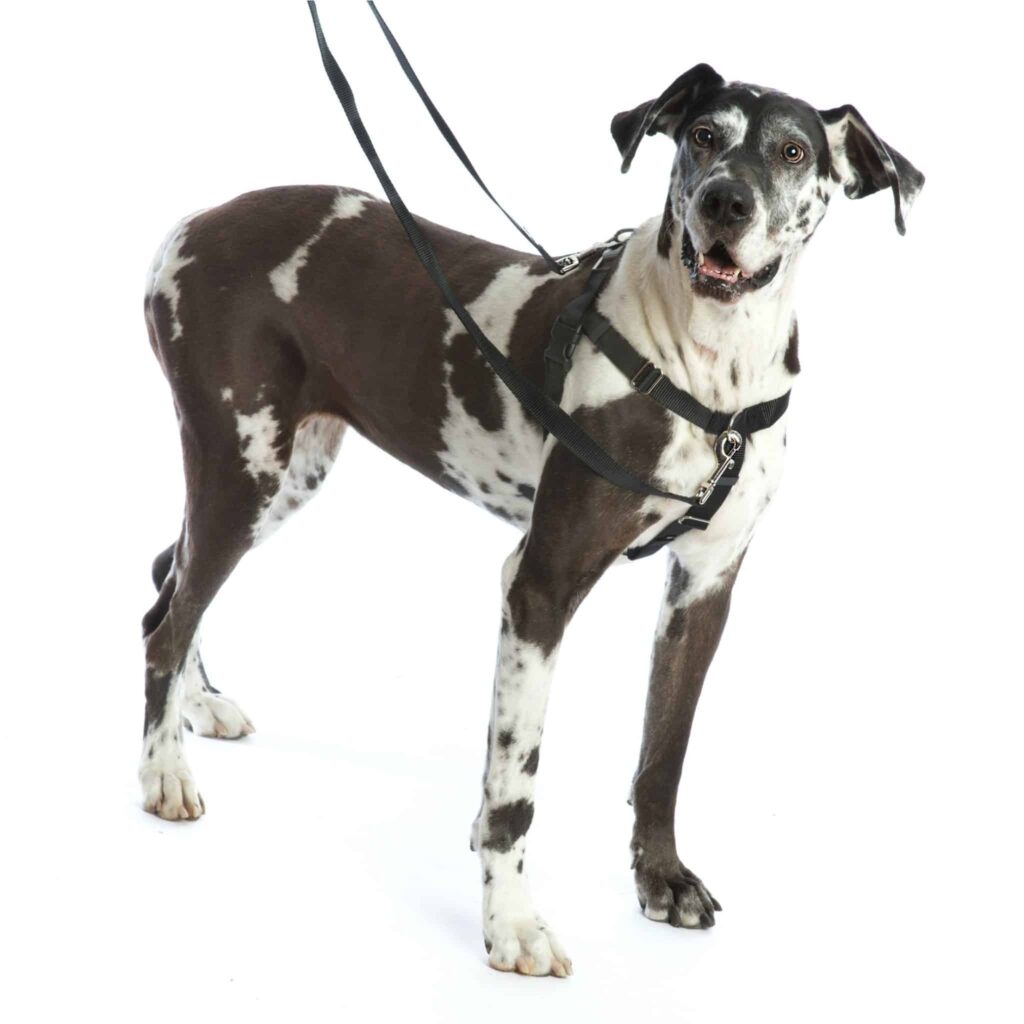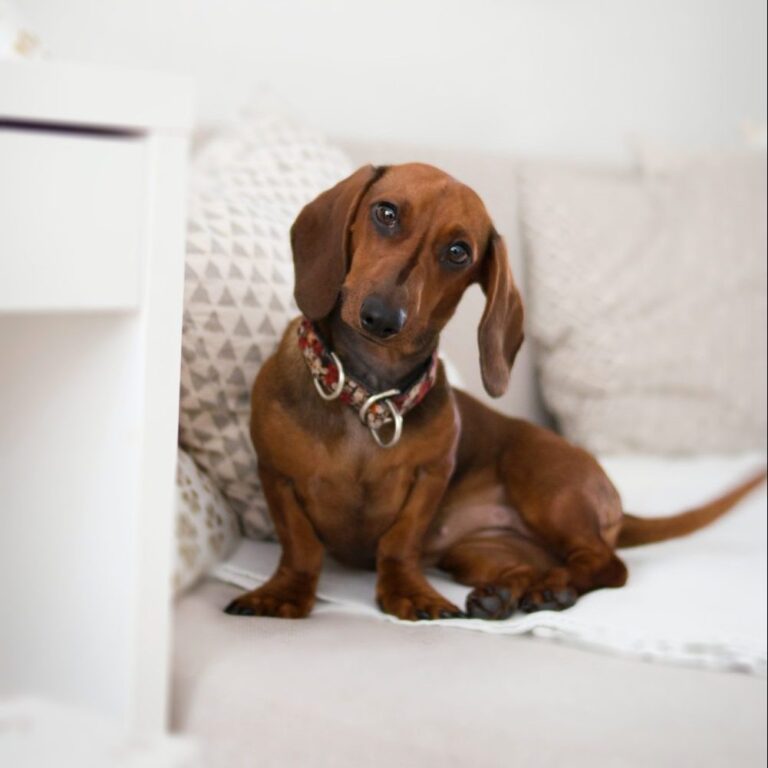How can a dog harness help you with walkies?
What’s the best thing about getting a dog? Companionship and exercise! The companionship pretty much takes care of itself, but the walking can sometimes be a challenge, especially if your is not lead trained.
Trying to lead train your dog so she is is walking happily by your side, stopping when you stop, turning when you turn, and showing no interest when you pass other dogs and people. You want him to not pull on the lead, and only go crazy and sniff when you give permission. Lead manners is one of the most challenging skill you will teach your dog. There is so much of interest to an inquisitive nose that trying to get their attention away from a doggy toilet patch can really be tough!, It can be fun though, and is well worth the effort when you are successful.
A dog harness can be a great start to the training process. If you are being dragged along the path, trying to stop your shoulder from being dislocated, thinking about training will be far down the list. While a dog harness won’t get your dog walking obediently next to you, it will make the process of getting their attention for the training process much easier.
A front-attachment dog harness such as the Freedom no-pull dog harness is great for all dogs. if your dog has aggressive tendencies, or you are a small owner with a giant breed dog, a head harness may be more suitable for you. Regardless of which dog harness type you use, it’s important not to walk them on a lead longer than about 6 feet. A long lead will allow them to start running and come to an abrupt stop when they reach the end of the lead. This could cause some serious damage to either or both of you.
There are some things that a dog harness can not achieve. And that is making your dog more interested in whatever’s in your hand as opposed to what’s dripping off the nearest blade of grass.
The usual distraction is a pocket full of your pet’s favourite treats. If you’re lucky, the smell of chickeny goodness, or even the sound of a crinkling bag can be enough to stop them in their tracks in anticipation of getting a treat. Sometimes they can’t be tempted into obedience with the promise of a treat though.
A simple way to help your dog learn to walk without pulling on the leash is to stop moving forward when he pulls and to reward him with treats when he walks by your side. If your dog is not very interested in food treats, then you can a tug a toy or toss a ball for him in place of feeding a treat.
The steps below will go into more detail in order to help you to teach him how to have excellent leash manners.

Step 1:Make walking with you the best thing in the world
- Attach your dog to a lead that is 10-20 feet long (but not retractable) while he is wearing a dog harness. Get some small treats to reward your dog and go to a familiar outdoor area that’s not too exciting – your garden is a good place to start.
- Decide whether you prefer your dog to walk on your left or right. Feed him his treat reward by your thigh on that side. He will soon begin to favour that side as that is the source of treats!
- Walk around randomly, whenever your dog chooses to walk beside you, reward him with praise and a treat next to your thigh. If he stays next to you, reward him for every step you take together. As he gets better at this you can reduce the frequency of the treats. If your dog is completely uninterested in you, try again later when he is a bit more hungry.
- Practice until your dog is staying beside you more often than not.
Step 2: Staying close to my owner gets me treats
- Walk around your garden and wait for a moment when your dog is walking off on his own. Say “let’s go” turn and walk away from your dog. You may need to clap your hands or make a noise to make sure he notices you.
- When he comes he gets praise and a treat. Feed him a treat every couple of steps if he keeps walking with you. If he catches up to you very quickly, he gets an extra reward.
- If the lead is fully extended and he doesn’t come towards you, stop walking and pull gently. This will motivate him no to ignore you. The No-Pull dog harness is especially effective for this. Praise him and release the pressure once he begins to come towards you. When he catches up with you reward him with praise and a treat. Feed him a treat every couple of steps.
- Continue to practice this step in your garden until he is staying by your side most of the time and if he veers off away from your side, he comes right back to your side after you say “let’s go”.
Step 3: I’ll sniff when I’m told to!
- Dogs needs time to sniff and relieve themselves while on the lead, but you should decide when that will be.. As you are practising lead walking, at regular intervals, maybe every 5 minutes, say something like “go sniff” and let him explore. This is also a reward, so if he pulls on the lead during this free time say “lets go” and walk away, ending the playtime.
- When you are ready to end the sniffing session, say “let’s go” and begin walking.
Step 4: Your dog will really start to pay attention to you.
- Continue practising, but use a shorter lead. Eventually, get it down to about 6 feet.
- Try walking extra fast or slow as well as stopping and changing directions.If he can stay by your side during these challenges, rewards will follow.
- Begin to treat him less frequently for walking by your side in normal circumstances. Continue rewards for staying by your side when you walk in a different manner than usual. If you encounter a distraction like another animal or person then give extra rewards.
Taking it to the Street:
- On your normal walks, use the same techniques. There will be more distractions such as people, squirrels and other dogs. Use a front-attached dog harness or for extra control and take an extra supply of treats.
- Say “let’s go” and start walking. If he forgets about you or pulls, say “let’s go” and walk in the opposite direction. If he leaves a particularly tempting distraction to walk with you then give him extra treats. Don’t forget to give him permission for sniff breaks.
Possible problems:
- If your dog crosses in front of you, stomp or shuffle your feet a bit to make your presence more obvious.
- If he continually walks behind, use lots of encouragement instead of pulling him along. If he is stopping to sniff just keep walking but be sure to apply only gentle pressure on the lead. Don’t forget to use lots of rewards when he does walk with you.
- If after you’ve practiced these steps, your dog seems to be alternating between walking beside you and pulling, stop rewarding when he comes back to you and concentrate on rewarding him for taking a larger number of consecutive steps by your side.




